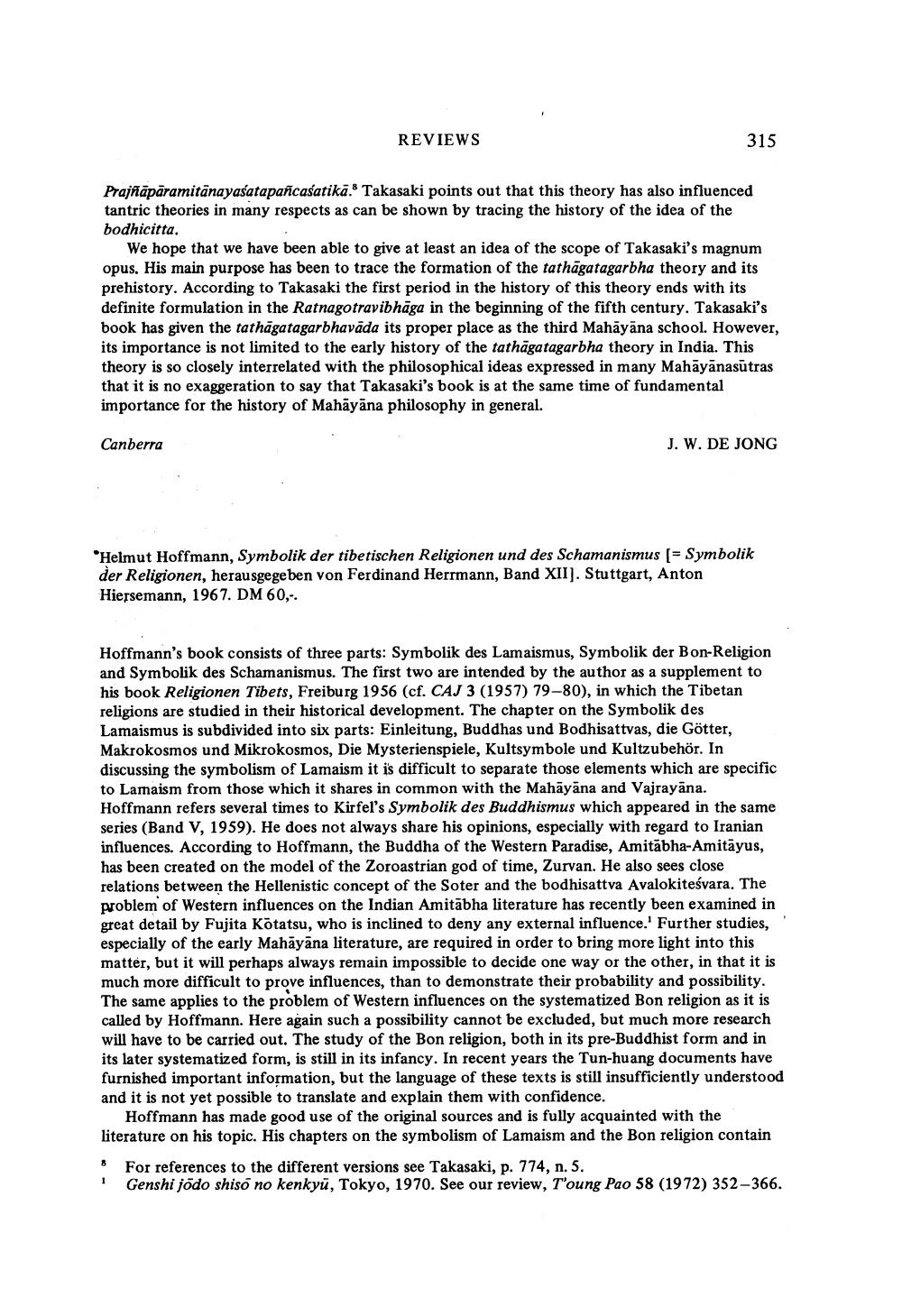________________
REVIEWS
315
Prajñāpāramitānayasatapancasatikā.8 Takasaki points out that this theory has also influenced tantric theories in many respects as can be shown by tracing the history of the idea of the bodhicitta.
We hope that we have been able to give at least an idea of the scope of Takasaki's magnum opus. His main purpose has been to trace the formation of the tathāgatagarbha theory and its prehistory. According to Takasaki the first period in the history of this theory ends with its definite formulation in the Ratnagotravibhāga in the beginning of the fifth century. Takasaki's book has given the tathāgatagarbhavāda its proper place as the third Mahāyāna school. However, its importance is not limited to the early history of the tathāgatagarbha theory in India. This theory is so closely interrelated with the philosophical ideas expressed in many Mahāyānasūtras that it is no exaggeration to say that Takasaki's book is at the same time of fundamental importance for the history of Mahāyāna philosophy in general.
Canberra
J. W. DE JONG
Helmut Hoffmann, Symbolik der tibetischen Religionen und des Schamanismus (= Symbolik der Religionen, herausgegeben von Ferdinand Herrmann, Band XII). Stuttgart, Anton Hiersemann, 1967. DM 60,-.
Hoffmann's book consists of three parts: Symbolik des Lamaismus, Symbolik der Bon-Religion and Symbolik des Schamanismus. The first two are intended by the author as a supplement to his book Religionen Tibets, Freiburg 1956 (cf. CAJ 3 (1957) 79-80), in which the Tibetan religions are studied in their historical development. The chapter on the Symbolik des Lamaismus is subdivided into six parts: Einleitung, Buddhas und Bodhisattvas, die Götter, Makrokosmos und Mikrokosmos, Die Mysterienspiele, Kultsymbole und Kultzubehör. In discussing the symbolism of Lamaism it is difficult to separate those elements which are specific to Lamaism from those which it shares in common with the Mahāyāna and Vajrayāna. Hoffmann refers several times to Kirfel's Symbolik des Buddhismus which appeared in the same series (Band V, 1959). He does not always share his opinions, especially with regard to Iranian influences. According to Hoffmann, the Buddha of the Western Paradise, Amitābha-Amitāyus, has been created on the model of the Zoroastrian god of time, Zurvan. He also sees close relations between the Hellenistic concept of the Soter and the bodhisattva Avalokitesvara. The problem of Western influences on the Indian Amitabha literature has recently been examined in great detail by Fujita Kötatsu, who is inclined to deny any external influence. Further studies, especially of the early Mahāyāna literature, are required in order to bring more light into this matter, but it will perhaps always remain impossible to decide one way or the other, in that it is much more difficult to prove influences, than to demonstrate their probability and possibility. The same applies to the problem of Western influences on the systematized Bon religion as it is called by Hoffmann. Here again such a possibility cannot be excluded, but much more research will have to be carried out. The study of the Bon religion, both in its pre-Buddhist form and in its later systematized form, is still in its infancy. In recent years the Tun-huang documents have furnished important information, but the language of these texts is still insufficiently understood and it is not yet possible to translate and explain them with confidence.
Hoffmann has made good use of the original sources and is fully acquainted with the literature on his topic. His chapters on the symbolism of Lamaism and the Bon religion contain
# For references to the different versions see Takasaki, p. 774, n. 5. I Genshi jodo shiso no kenkyū, Tokyo, 1970. See our review, T'oung Pao 58 (1972) 352-366.




